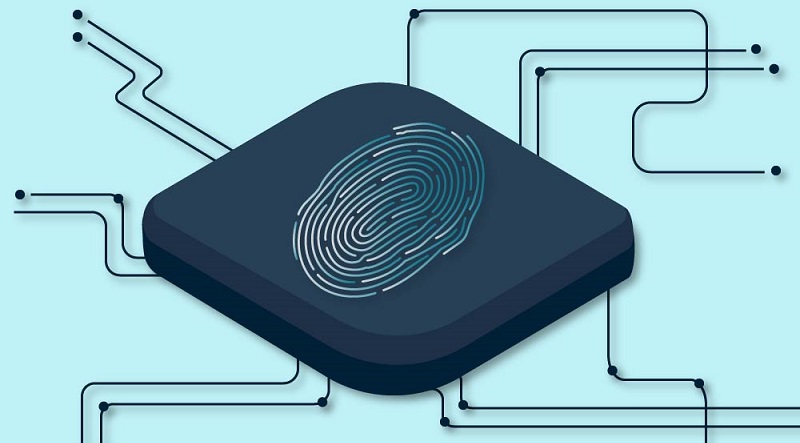In an increasingly digital world, the concept of digital identity has emerged as a powerful tool for enabling secure, efficient, and personalized access to services across sectors. Whether for banking, healthcare, or government services, digital identity systems offer a streamlined approach to verifying individual identities in real-time. Regulatory sandboxes, designed to foster innovation in a controlled environment, are proving to be critical in unlocking the full potential of digital identity. This article explores how regulatory sandboxes are shaping the future of digital identity, the benefits they bring, and the challenges they seek to address.
Understanding Digital Identity
Digital identity refers to the electronic verification of an individual’s identity using various digital technologies, often based on a combination of personal information (e.g., name, address, date of birth) and biometric data (e.g., fingerprints, facial recognition). Digital identities can be used to authenticate users across multiple platforms, ensuring secure access to online services, financial systems, and public infrastructures.
A robust digital identity system ensures that individuals can prove their identity online, participate in digital transactions, and gain access to a wide range of services, all while protecting their personal information. This concept has gained traction in sectors like finance, healthcare, and e-commerce, where verification processes are integral to security and user experience.
The Role of Regulatory Sandboxes in Digital Identity Development
Regulatory sandboxes provide a controlled environment where innovators can test new technologies under the supervision of regulators. These frameworks enable companies to experiment with digital identity solutions, monitor real-world applications, and fine-tune their products before wider implementation. Sandboxes have become essential in industries such as FinTech, where regulatory compliance is critical.
In the context of digital identity, sandboxes offer several advantages:
- Testing New Models: Developers of digital identity systems can experiment with novel approaches to identity verification, data protection, and interoperability, ensuring compliance with existing regulations while gaining insights into how their solutions perform in real-world scenarios.
- Regulatory Flexibility: Sandboxes provide regulatory flexibility, allowing innovators to navigate complex rules in sectors like finance and healthcare while exploring the latest technology solutions.
- Fostering Collaboration: Sandboxes promote collaboration between private companies, regulators, and other stakeholders, ensuring that digital identity solutions align with regulatory requirements and meet the needs of end users.
Sandbox Observations: Key Learnings from Digital Identity Pilots
Through regulatory sandbox initiatives, governments and private organizations have explored various use cases for digital identity. Some of the key insights include:
1. Improving Financial Inclusion
Digital identity systems hold immense potential for improving financial inclusion. Millions of people, particularly in developing countries, lack formal identification, which prevents them from accessing financial services. Digital identity offers a solution by providing a secure, low-cost way for unbanked individuals to verify their identities and gain access to banking services.
- Sandbox Example: In Kenya, regulatory sandbox projects have enabled the testing of digital identity solutions for mobile money platforms like M-Pesa, allowing unbanked individuals to access financial services via mobile phones using biometrics and digital IDs. This initiative demonstrated how digital identity could remove barriers to financial access and reduce dependency on physical documentation.
2. Enhancing Data Privacy and Security
One of the primary concerns around digital identity systems is data privacy and security. Regulatory sandboxes allow for the experimentation of advanced security features, such as blockchain and self-sovereign identity (SSI), where individuals have full control over their personal data.
- Sandbox Example: A European sandbox focused on integrating blockchain with digital identity demonstrated the value of decentralized identity models. Participants were able to use self-sovereign identity to control their personal information, sharing only the necessary data with third-party services without compromising privacy. The sandbox revealed how blockchain technology can be harnessed to create more secure, tamper-proof identity systems.
3. Streamlining Government Services
Governments are major stakeholders in the adoption of digital identity systems. By digitizing identity, public services can be delivered more efficiently, cutting down on bureaucratic delays and improving service access for citizens.
- Sandbox Example: In Estonia, one of the leading countries in digital identity innovation, the regulatory sandbox environment allowed the development of e-Residency—a digital identity for non-Estonian citizens to access Estonia’s e-services from anywhere in the world. Through the sandbox, the government identified areas for improvement, such as stronger data protection and service integration, leading to the scaling of the system to include over 100,000 e-residents.
4. Fostering Trust in Digital Transactions
Building trust in digital identity systems is essential for widespread adoption. Sandboxes have allowed innovators to trial new technologies that improve user trust, such as biometric authentication and multi-factor authentication (MFA).
- Sandbox Example: In the United Kingdom, sandbox initiatives have piloted facial recognition and other biometric authentication systems to streamline the onboarding process for new financial customers. By testing in a controlled environment, developers identified potential issues with facial recognition algorithms, such as bias and accuracy problems. Sandbox results informed improvements in the technology, ensuring greater fairness and security for end users.
Challenges in Digital Identity Development
While sandboxes are instrumental in advancing digital identity systems, several challenges have been identified in the sandbox environment:
1. Regulatory Complexity
Navigating complex, overlapping regulations remains a challenge for digital identity solutions. Different regions and industries have varying requirements regarding identity verification, data protection, and cybersecurity, making it difficult for global interoperability.
2. Ensuring Interoperability
Digital identity systems must be interoperable across platforms, industries, and borders. Sandboxes have revealed that ensuring seamless interaction between different systems is a significant challenge, especially when different identity verification standards are used.
3. Balancing Innovation with Compliance
Striking the right balance between fostering innovation and maintaining regulatory compliance is difficult, particularly in sectors like finance and healthcare, where identity verification is highly regulated. Sandboxes provide some regulatory flexibility, but there is still tension between encouraging new technologies and enforcing strict standards.
The Future of Digital Identity: Unlocking Full Potential
The full potential of digital identity lies in its ability to transform sectors such as finance, healthcare, and government by providing secure, scalable, and user-friendly identity verification solutions. Regulatory sandboxes will continue to play a critical role in testing and refining digital identity systems, ensuring they meet the needs of users and regulators alike.
1. Expansion of Self-Sovereign Identity
Self-sovereign identity models are likely to see greater adoption, allowing users to control their own identity data. Sandboxes will help test how these models can be scaled while maintaining security and compliance with local and international regulations.
2. Integration with Emerging Technologies
The future of digital identity will be shaped by its integration with emerging technologies like Artificial Intelligence (AI), Blockchain, and Internet of Things (IoT). Sandboxes will help test how these technologies can enhance identity verification, particularly in high-risk sectors like healthcare and finance.
3. Greater Focus on Inclusion and Access
Digital identity systems will need to ensure that they serve marginalized populations, such as individuals in remote or underserved areas, who may lack formal identification. Sandbox projects that focus on financial inclusion and accessible digital identity systems will be critical in ensuring that no one is left behind.
Regulatory sandboxes are unlocking the potential of digital identity by providing a safe space for experimentation, collaboration, and innovation. Through sandbox testing, developers and regulators can fine-tune digital identity solutions, ensuring they are secure, user-friendly, and scalable. As these technologies mature, digital identity will transform industries, increase financial inclusion, and streamline services across the globe. The sandbox environment will remain an essential catalyst for future breakthroughs in this evolving field.





